Spatially resolved gene expression profiling of tumor microenvironment reveals key steps of lung adenocarcinoma development
- PMID: 39639005
- PMCID: PMC11621540
- DOI: 10.1038/s41467-024-54671-7
Spatially resolved gene expression profiling of tumor microenvironment reveals key steps of lung adenocarcinoma development
Abstract
The interaction of tumor cells and their microenvironment is thought to be a key factor in tumor development. We present spatial RNA profiles obtained from 30 lung adenocarcinoma patients at the non-invasive and later invasive stages. We use spatial transcriptome sequencing data in conjunction with in situ RNA profiling to conduct higher resolution analyses. The detailed examination of each case, as well as the subsequent computational analyses based on the observed diverse profiles, reveals that significant changes in the phenotypic appearances of tumor cells are frequently associated with changes in immune cell features. The phenomenon coincides with the induction of a series of cellular expression programs that enable tumor cells to transform and break through the immune cell barrier, allowing them to progress further. The study shows how lung tumors develop through interaction in their microenvironments.
© 2024. The Author(s).
Conflict of interest statement
Competing interests: The authors declare no competing interests.
Figures
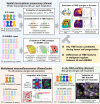
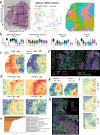
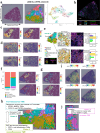

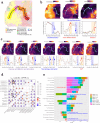
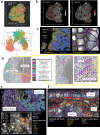

References
-
- Junttila, M. R. & De Sauvage, F. J. Influence of tumour micro-environment heterogeneity on therapeutic response. Nature501, 346–354 (2013). - PubMed
-
- Sautès-Fridman, C., Petitprez, F., Calderaro, J. & Fridman, W. H. Tertiary lymphoid structures in the era of cancer immunotherapy. Nat. Rev. Cancer19, 307–325 (2019). - PubMed
Publication types
MeSH terms
Grants and funding
LinkOut - more resources
Full Text Sources
Medical

